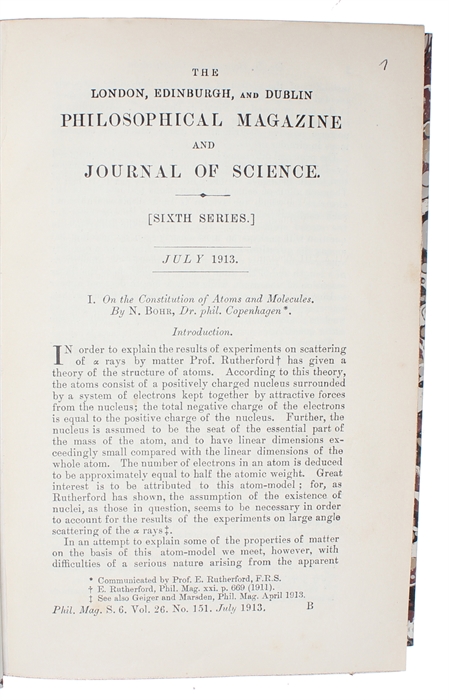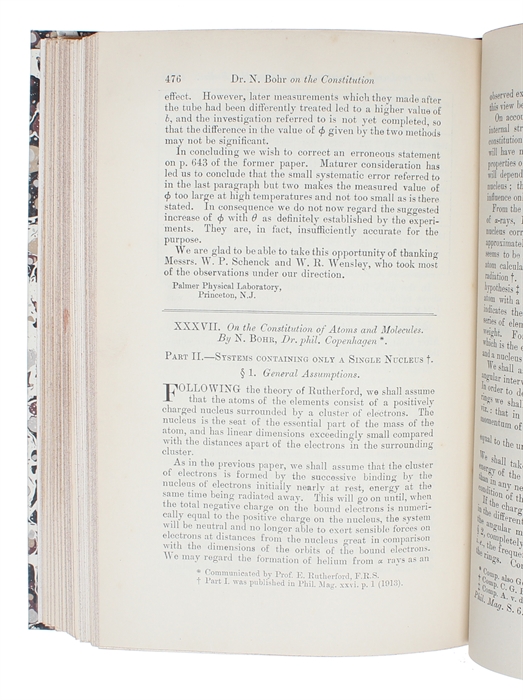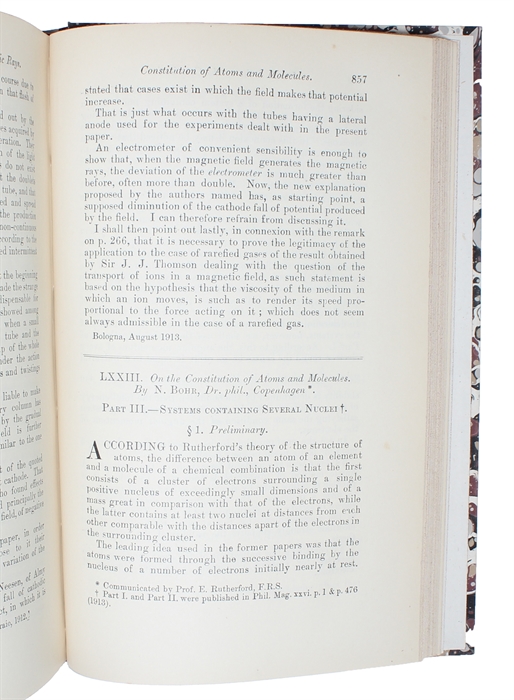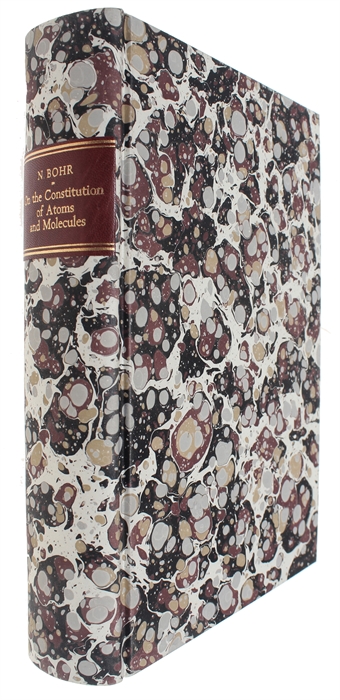THE BIRTH OF MODERN ATOMIC THEORY (PMM 411)
BOHR, NIELS.
On the Constitution of Atoms and Molecules. 3 Parts (all).
London, Taylor & Francis, 1913. 8vo. Bound together in one very nice recent marbled paper binding with gilt leather title-label to spine. Published in "The London, Edinburgh, and Dublin Philosophical Magazine and Journal of Science", Vol. 26: July 1913, No. 151 (pp. 1-232 + 6 plates) - September 1913, No 153 (pp. 381-548) - November 1913, No 155 (pp. 802-936 + 6 plates). (The 3 whole numbers of the journal offered). The Bohr papers: pp. 1-25; pp. 476-502; pp.857-875.
First edition of Bohr's seminal main work, which constitutes the departure from classical theories; by incorporating Planck's quantum postulate it became possible to calculate the wavelength of the hydrogen emission and thus to explain the regularity of the Balmer-lines.
In his previous paper ("On the Theory of Decrease of Velocity of Moving Electrified Particles on passing through Matter") Bohr had adopted Rutherford's nuclear model of the atom, and had become convinced that it was the peripherical electrons that determined the chemical properties of an element, whereas the nucleus determine the radioactive properties. However, Rutherford's model had an apparent explanatory problem: Why were the negatively charged electrons held away from the positive nucleus?
In his doctorial dissertation on the electron theory of metals, Bohr had clarified the limitations of this theory, in particular its ability to explain magnetic properties, and he had shown how this arose from the classical nature of some of its foundations. Bohr strongly expected that the key to solving this problem was to be found in some way of introducing Planck's law of quantum action.
In the beginning of 1913 Bohr heard about Rydberg's remarkable discovery in spectroscopy. Rydberg's formula could represent the frequencies of the lines of the hydrogen spectrum in the simplest form in terms of two integers. As soon as Bohr saw this formula, he immediately recognized that it gave him the missing clue to the correct way to introduce Planck's law of quantum of action into the description of the atomic systems.
The rest of the academic year was spent reconstructing the whole theory upon the new foundation and expounding it in a large treatise, which was immediately published as these three papers in the 'Philosophical Magazine'. It was in these papers that Bohr first gave his postulates of the orbital structure of the electrons and their quantized radiation.
Bohr's atomic theory inaugurated two of the most adventurous decades in the history of science. In 1922 Bohr was awarded the Nobel Prize "for his services in the investigation of the structure of atoms and of the radiation emanating from them".
Bohr introduced the following postulates: 1. An electron can revolve about its nucleus only in certain special circular orbits. 2. The ordinary electron revolves about its nucleus in an invariable orbit, without radiating or absorbing energy. 3. Radiation takes place when and only when the electron falls from an orbit with greater energy to one of less energy.
Rosenfeld, Bohr Bibliography No. 6. Rosenfeld, Dictionary of Scientific Biography II, pp. 240-41. Printing and the Mind of Man: 411.
Order-nr.: 39305




